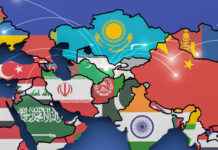Tradition and avant-garde. That was the combination that elevated Issey Miyake (Hiroshima, 1938) and that earned him a place in the world of fashion. Yesterday, both the industry that saw her grow professionally and the international community gave her their last goodbye after her study confirmed her death on August 5 due to liver cancer at the age of 84.
Europe and the USA were his main school, where he trained and began his career as a fashion designer. However, he chose Tokyo to establish his definitive studio and create his own eponymous brand in 1970. And it is that his native country turned out to be his true muse, both for him and for the attendees of the different catwalks that made him an icon, being the most popular New York and Paris, which earned him global recognition. It was precisely in the French capital where on June 23 he held his last face-to-face fashion show outside of Japan, after a two-year lapse due to the pandemic.
There are several personal stamps that have made Miyake a reference. Some examples are the line of Bao Bao bags with geometric patterns or the use of pleats in her garments, of special importance in her career to the point of developing the Pleats Please line (Plisados, por favor), which is still on the market. . As for a characteristic garment, the turtleneck sweaters stand out, a guarantee of elegance, sophistication and simplicity. They became especially popular thanks to Steve Jobs. And there is no person who imagines the co-founder of Apple without his particular black sweater announcing a new product in any of the many technology presentations.
Ballet was also always a fundamental and inspiring element for the Japanese, who looked at the hypnotic movements of this dance for many of his creations. He also launched his own line of perfumes, L’Eau d’Issey, proving once again to be a visionary. Another proof of this were some of the works that he carried out in his last years, most of them made from recycled PET plastic bottles.
In addition, he financed a research foundation on the history of design and fashion and focused on working with new generations of designers, not only to pass on his knowledge, but also to immerse himself in new tastes and what was to come. Ultimately, he focused his efforts on always being one step ahead. For all this and much more, his dresses have not been worn exclusively on the catwalks but have also reached museums around the world. In addition, many of them have been recognized with outstanding awards, such as the Kyoto Prize for Arts and Philosophy (2006), the Order of Culture of Japan (2010), the Golden Compass of Italy (2014) or the Legion of French Honor (2016). Another date to keep in mind is 1999, the year in which he relinquished control of his Issey Miyake brand and began to focus on new and motivating projects, including the opening in 2007 of 21_21 Design Sight, the first Japanese museum dedicated to exclusively to design.
As for his personal life, discretion was always his forte, although he broke that line in 2009 by revealing that he was one of the survivors of the atomic bombing of Hiroshima. An information that he hid until then because he wanted to obtain his achievements exclusively for his work and not for his biography. And today it can be said that he succeeded.








